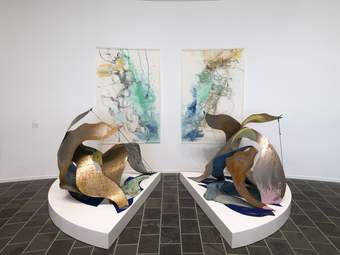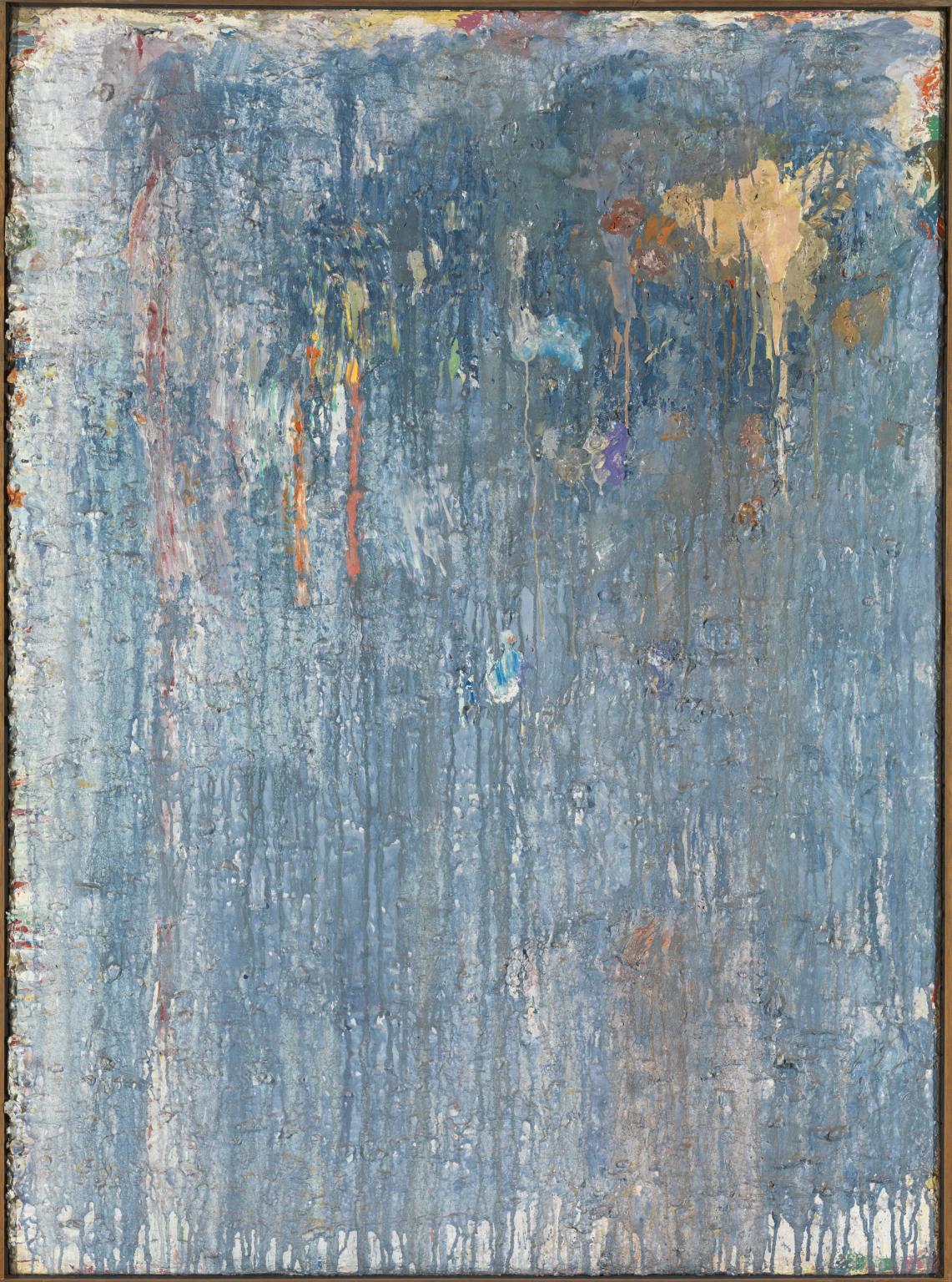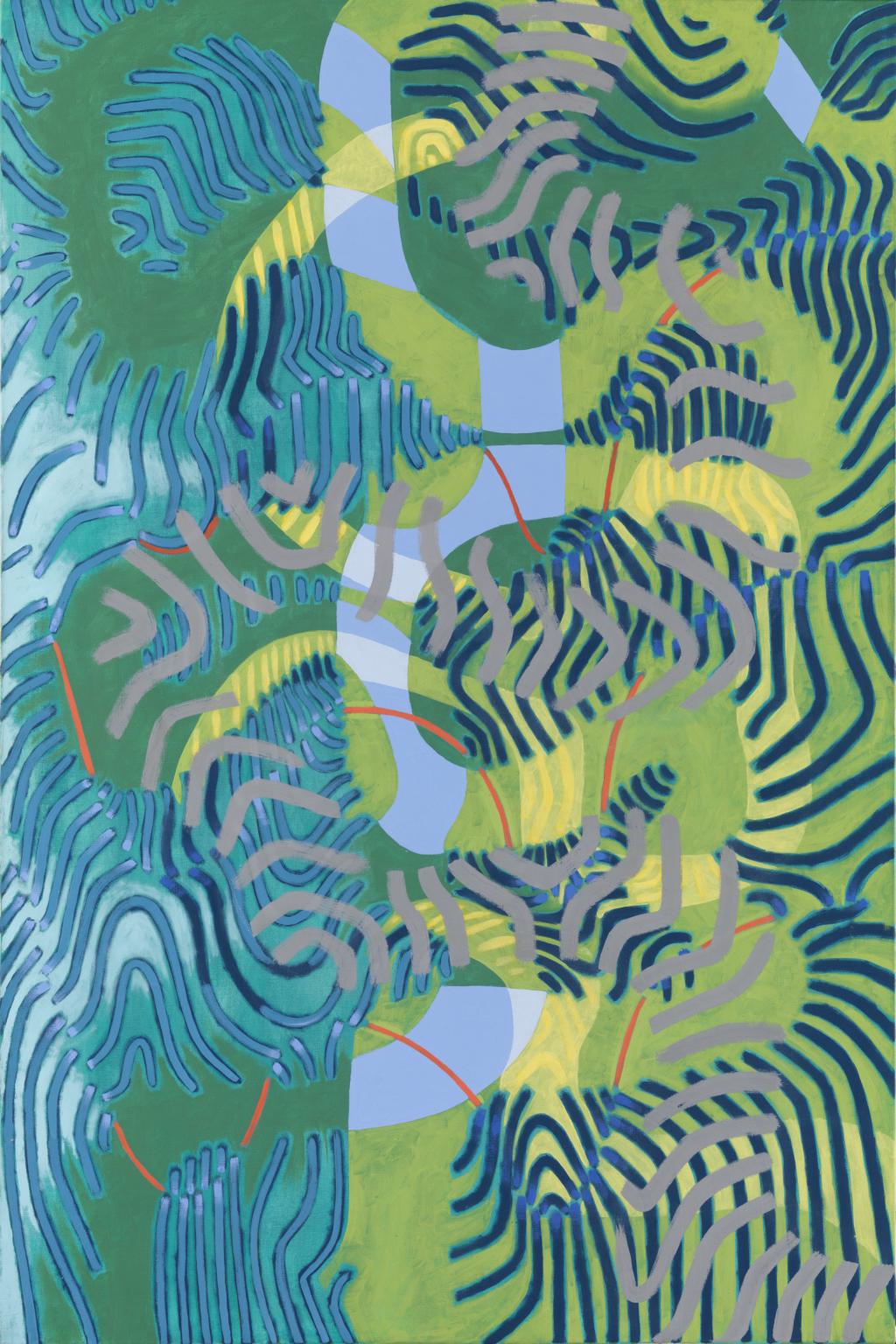6 rooms in Modern Conversations
The coastline around St Ives is a vital space for creative exploration
The ever-shifting boundary between land, ocean, and sky has inspired artists interested in communicating transitions in their lives, art, and society.
This room centres on the practice of Cornwall-based artist Ro Robertson. Their installation Interlude responds to the tidal zone of Porthmeor Beach and the changing shoreline between the headlands of The Island and Carrick Du (opposite this gallery). Robertson has approached the landscape through the lens of LGBTQIA+ experience, commenting ‘we are part of a diverse natural world in constant flux where boundaries aren’t binary and rigid but rather flow in constant harmony’.
Robertson’s Interlude is presented alongside paintings by artists who worked in Cornwall in the twentieth century. These works employ colour, space, and gestural mark-making to communicate emotional and sensory relationships with the landscape, as well as social and environmental transformations. Reflecting contrasting experiences of uncertainty, displacement, hope, and belonging, Modern Thresholds concludes the Modern Conversations Tate collection displays.
Spotlight on Ro Robertson (born 1984)
Ro Robertson’s new installation combines drawings developed on Porthmeor Beach and at Porthmeor Studios in St Ives with sculptures created at the artist’s studio in nearby Lelant. Titled after the musical term for a passage bridging two instrumental sections, Interlude addresses ideas of existing ‘in-between’, exploring meeting points between mind and body, body and land, land and sea, or rigid steel and fluid paint.
Robertson worked on Porthmeor Beach at varying times of day and night to create the drawings. They used automatic techniques to draw freely and unconsciously, reflecting the ‘improvisation of the sea and the chance compositions it leaves behind’. The sculptures began as spontaneous drawings scaled to the limits of Robertson’s reach, so the steel forms the artist eventually cut and welded reflected the movements of their body. At the centre of the installation, Robertson has created a gap that can be occupied by the visitor, inviting us to consider new ways of experiencing our place in the landscape.
Tate St Ives
Level 2
Level 2
Ongoing
Entry to both the display and the gallery is free for Tate Members, Locals' Pass holders and under 18s.
Become a memberArt in this room
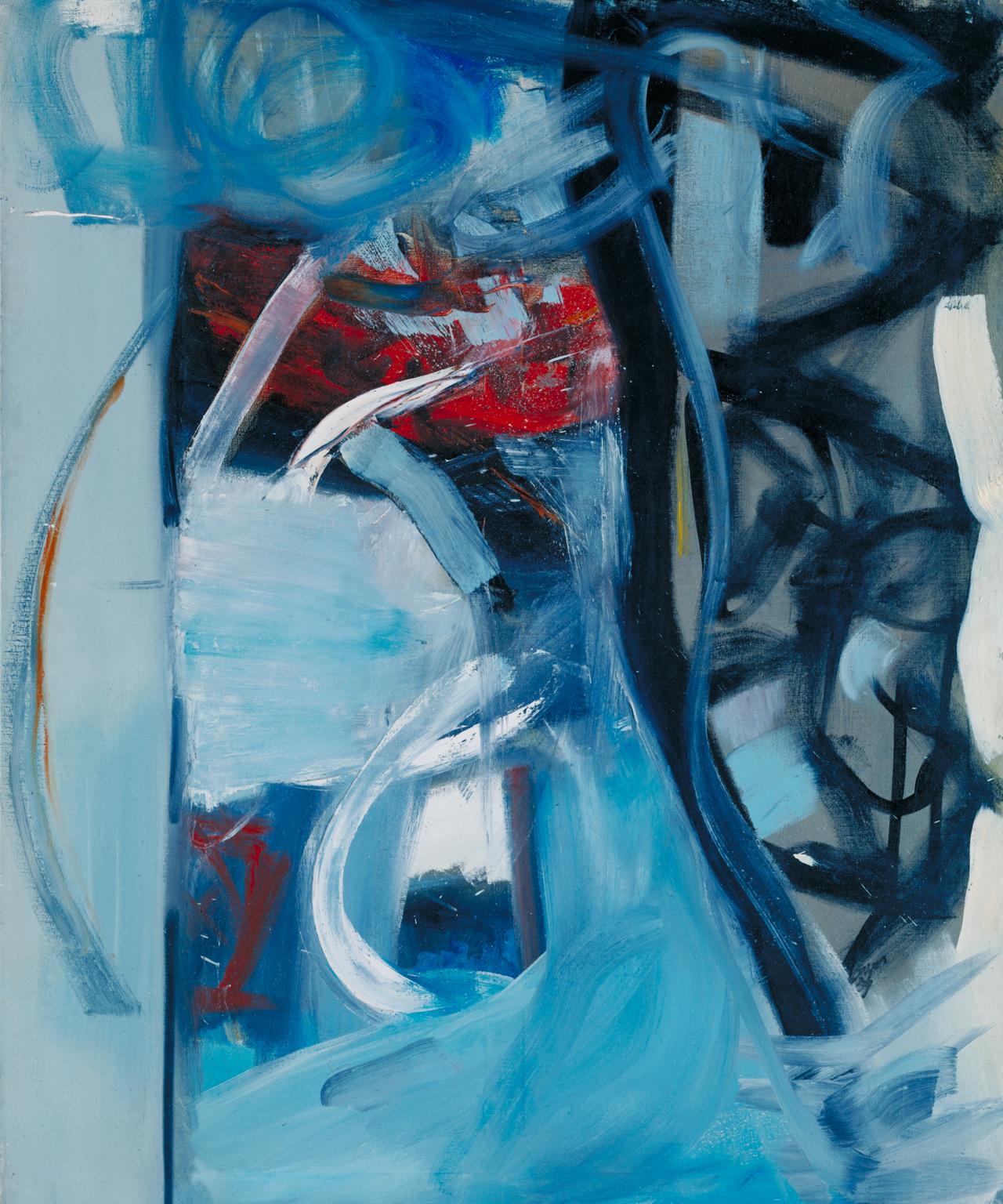
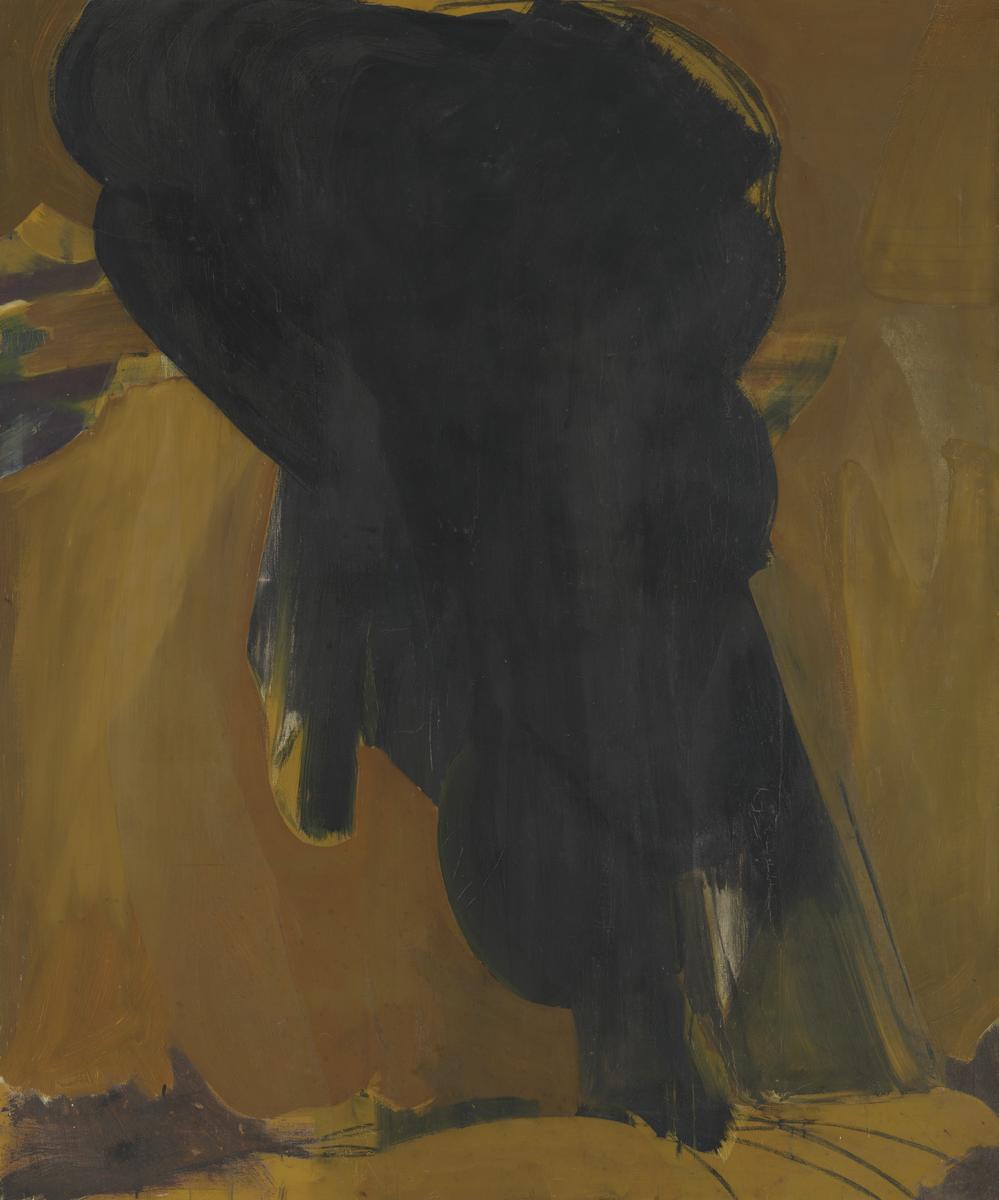
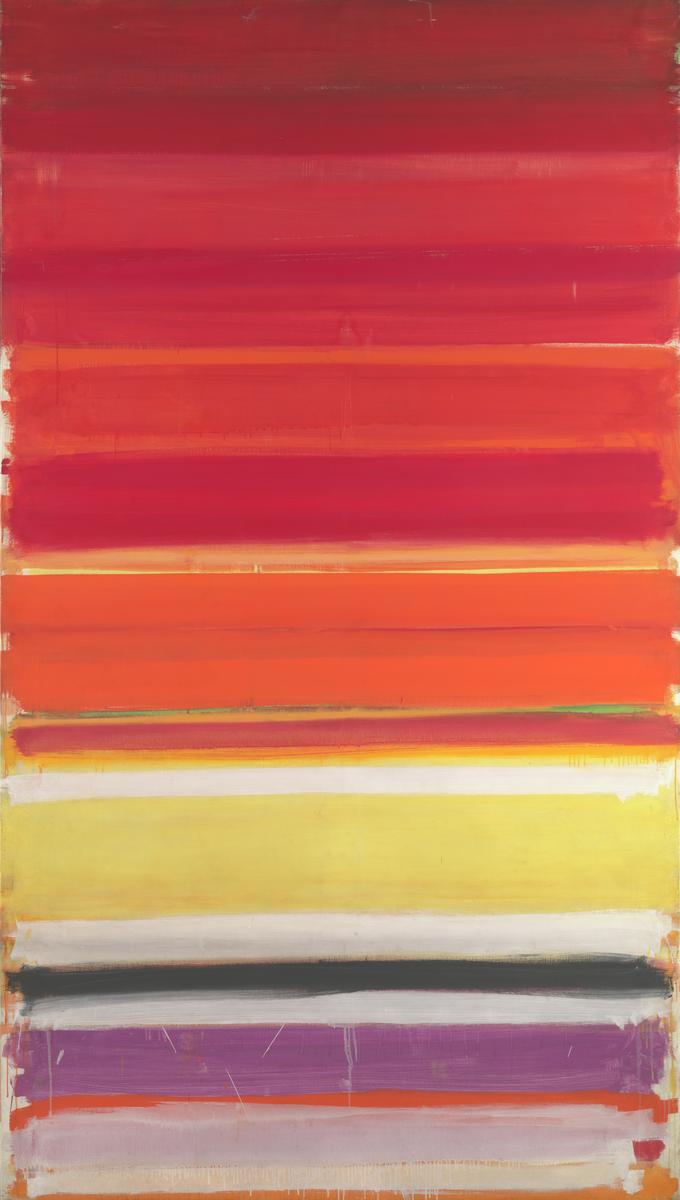
Sorry, no image available
Sorry, no image available
Sorry, no image available
You've viewed 6/9 artworks
You've viewed 9/9 artworks

